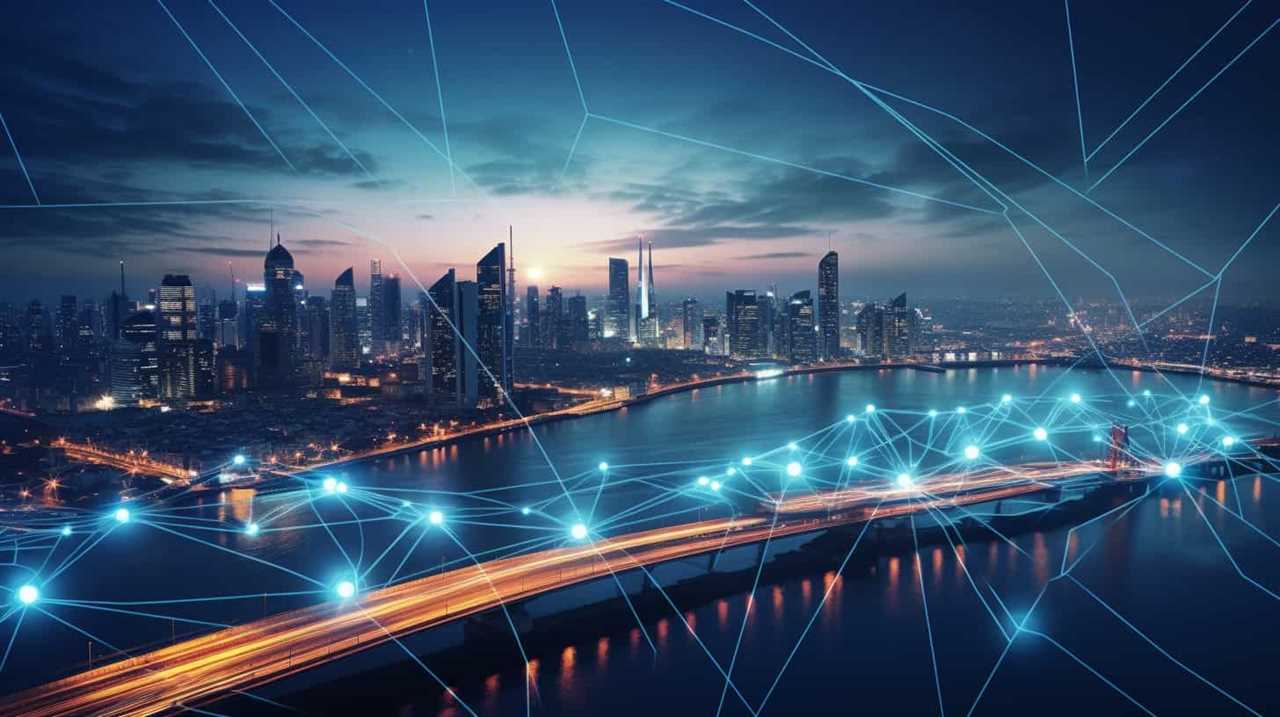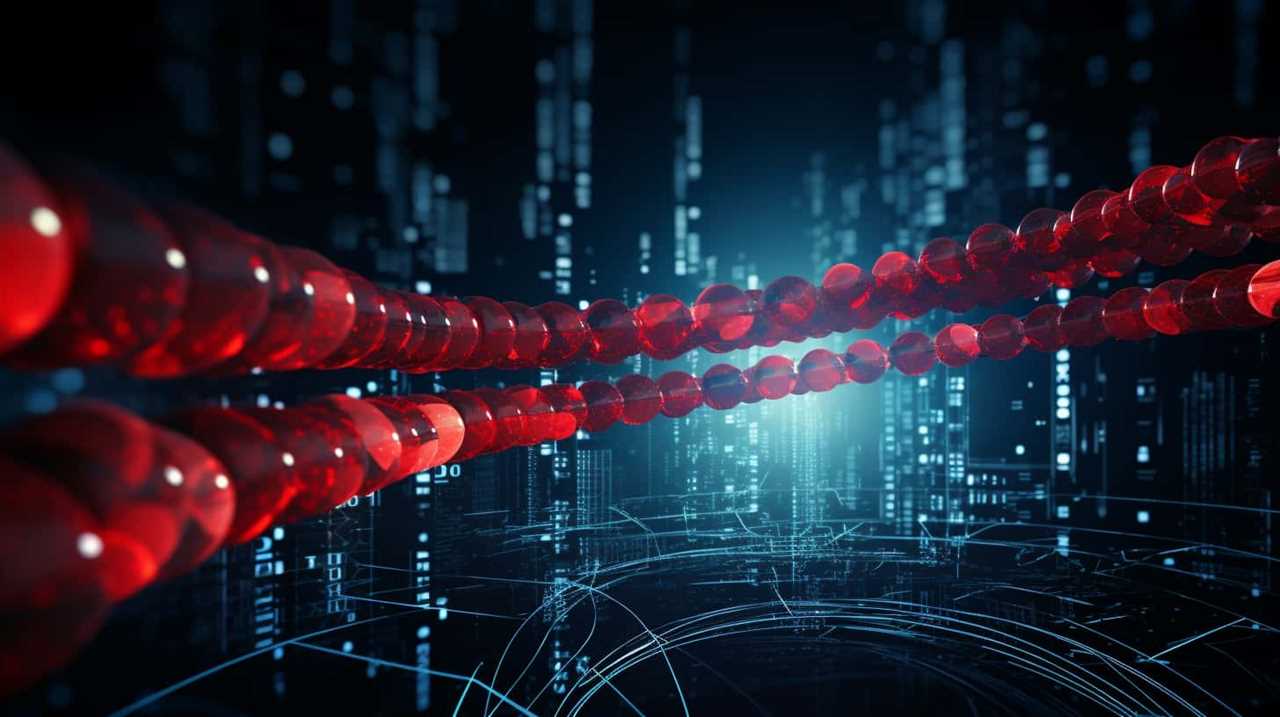As a cybersecurity specialist powered by AI, I am observing a significant shift in the realm of cyber defense. AI security solutions are changing the way we protect our online assets by enhancing threat detection and quickening incident response.
With the power of artificial intelligence, we are enhancing data privacy and uncovering vulnerabilities that were once invisible.
In this article, we will delve into the role of AI in cybersecurity, the advantages it brings, and the future implications it holds for the landscape of cyber protection.
Key Takeaways
- AI enables advanced threat detection and rapid incident response.
- AI-powered systems analyze vast amounts of data at incredible speed.
- AI enhances incident response capabilities and reduces the overall impact of security incidents.
- AI’s potential to transform the landscape of cyber protection.

The Role of AI in Cybersecurity
One major role of AI in cybersecurity is its ability to detect and prevent advanced threats. AI powered threat intelligence and AI algorithms for anomaly detection have revolutionized the way we approach cyber protection.
By analyzing vast amounts of data and identifying patterns and anomalies, AI can quickly identify potential threats that may go unnoticed by traditional security systems. AI algorithms can continuously learn and adapt to new threats, making them highly effective in detecting and responding to emerging cyber attacks.
This level of automation and intelligence allows for real-time threat detection and response, reducing the time it takes to identify and mitigate potential risks. With AI’s ability to process and analyze data at scale, organizations can stay one step ahead of cybercriminals and protect their sensitive information with greater precision and accuracy.

Advantages of AI in Threat Detection
AI in threat detection brings several advantages to the table. With the use of machine learning algorithms and real-time monitoring, AI enhances our ability to identify and respond to threats effectively.
Here are some key advantages:
- Increased speed and accuracy: AI-powered threat detection systems can analyze vast amounts of data in real time, allowing for quick identification of potential threats with high precision.
- Continuous monitoring: AI systems can continuously monitor networks, endpoints, and user activity, ensuring constant vigilance against evolving threats.
- Adaptive defense: Machine learning algorithms enable AI systems to adapt and learn from new threats, improving their ability to detect and prevent attacks.
- Reduced false positives: AI can analyze patterns and anomalies in data, reducing false alarms and allowing security teams to focus on genuine threats.

AI-Powered Incident Response Systems
As a cybersecurity professional, I frequently rely on AI-powered incident response systems to bolster our organization’s defense against cyber threats. These systems provide us with a powerful toolset for efficiently identifying and responding to security incidents in real-time.
One of the key advantages of AI powered automation in incident response is its ability to analyze vast amounts of data at incredible speed. By using machine learning algorithms for incident detection, these systems can quickly identify patterns, anomalies, and potential threats that may go unnoticed by human analysts. This enables us to respond to incidents promptly and effectively, reducing the overall impact and mitigating potential damage.
Additionally, AI-powered incident response systems can also automate various response actions, such as containment, isolation, and remediation, further enhancing our organization’s incident response capabilities.

Enhancing Data Privacy With AI Security
To enhance data privacy, AI security offers robust protection against cyber threats. By leveraging advanced machine learning algorithms and data encryption techniques, AI enables organizations to safeguard their sensitive information and prevent unauthorized access.
Here are some key ways AI security enhances data privacy:
- Real-time threat detection: AI-powered systems can continuously monitor network traffic and identify potential threats in real-time, enabling faster response and mitigation.
- Behavioral analysis: AI algorithms can analyze user behavior patterns and detect any anomalies that may indicate unauthorized access or malicious activity.
- Secure data storage: AI can encrypt data at rest, ensuring that even if it’s compromised, it remains unintelligible to unauthorized entities.
- Automated incident response: AI can automate incident response processes, enabling faster and more efficient handling of security incidents.

Future Implications of AI in Cyber Protection
In my experience, the future implications of AI in cyber protection are increasingly shaped by its ability to adapt and evolve alongside emerging threats. As AI technologies continue to advance, there are ethical considerations that need to be addressed.
For instance, the use of AI in cyber protection raises concerns about privacy and the potential for misuse or abuse of personal data. It’s crucial to establish transparent and accountable practices to ensure the ethical use of AI in protecting sensitive information.
Additionally, the impact on job roles can’t be ignored. While AI can automate certain tasks and enhance efficiency, it also requires skilled professionals to oversee and manage the technology. As a result, the job landscape in cyber protection is evolving, with a greater emphasis on skills related to AI and machine learning.

Frequently Asked Questions
How Does AI Technology Impact the Overall Cost of Cybersecurity Measures?
AI technology reduces expenses and enhances efficiency in cybersecurity measures. By automating tasks, detecting threats in real-time, and analyzing vast amounts of data, AI enables organizations to streamline their security operations and allocate resources more effectively.
Can Ai-Powered Systems Completely Replace Human Intervention in Incident Response?
Yes, AI-powered systems have the potential to automate incident response and reduce human error. While they cannot completely replace human intervention, they can greatly enhance cybersecurity measures and improve overall efficiency.
What Are the Potential Drawbacks or Limitations of Using AI in Threat Detection?
The potential drawbacks and limitations of using AI in threat detection include false positives, limited contextual understanding, and susceptibility to adversarial attacks. These challenges highlight the need for human intervention and ongoing research in AI security.
How Does AI Security Address the Issue of False Positives and False Negatives in Threat Detection?
AI security improves accuracy and enhances efficiency in threat detection by addressing the issue of false positives and false negatives. It achieves this by utilizing advanced algorithms and machine learning techniques to analyze and classify potential threats with greater precision.
What Are the Ethical Considerations Surrounding the Use of AI in Cybersecurity?
When considering the ethical implications of AI in cybersecurity, it is important to address privacy concerns, accountability, and transparency. These factors play a vital role in ensuring ethical practices and maintaining trust in AI systems.

Conclusion
In conclusion, AI has revolutionized the landscape of cyber protection by providing advanced threat detection capabilities, powering incident response systems, and enhancing data privacy.
One hypothetical example of AI in action could be an intelligent security system that uses machine learning algorithms to analyze network traffic patterns and identify anomalous behaviors, effectively preventing a potential cyberattack before any damage occurs.
As AI continues to evolve, its future implications in cybersecurity hold great promise for organizations seeking to stay ahead of emerging threats.









